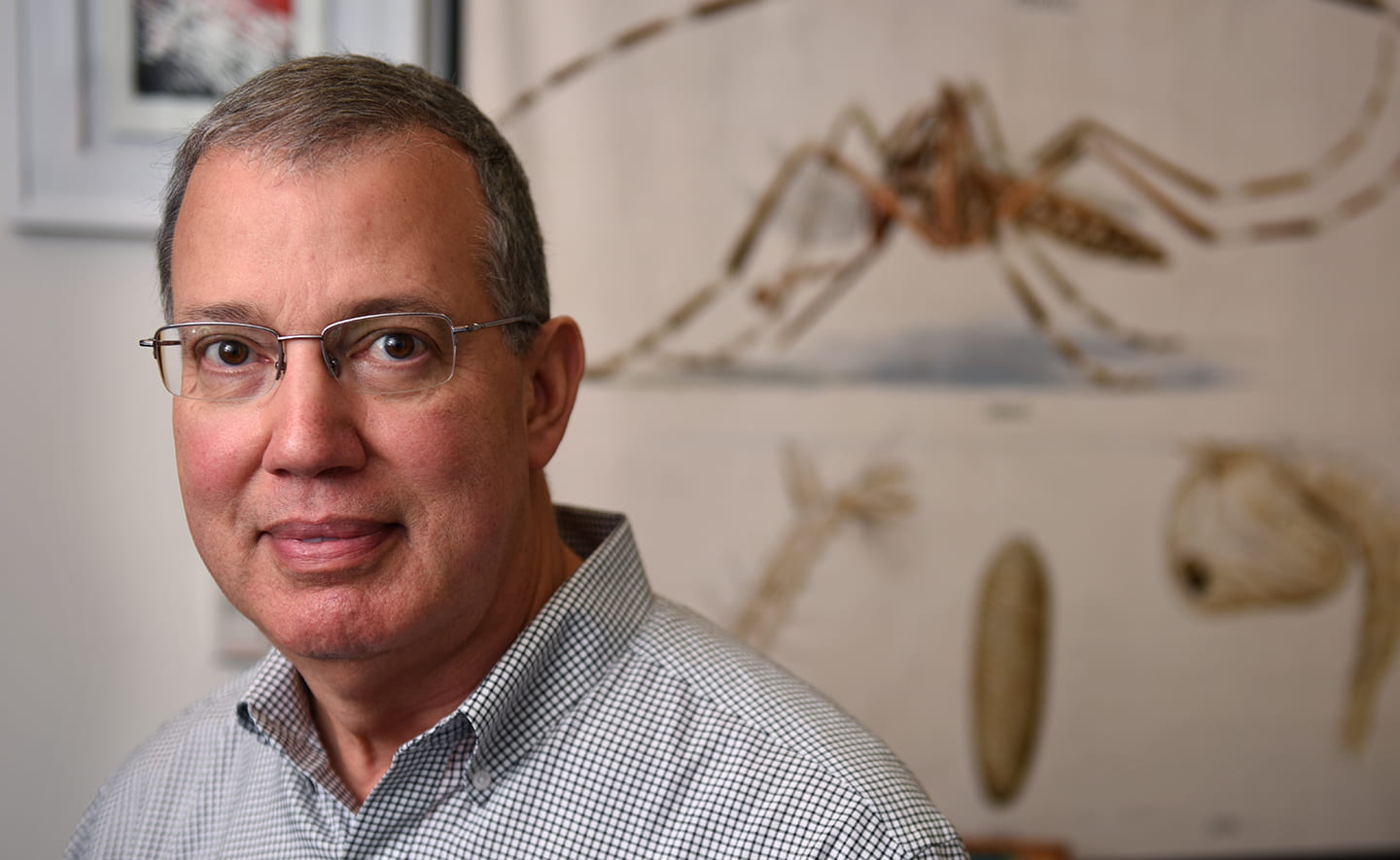UC researchers pioneer more effective method of blocking malaria transmission in mosquitoes
New CRISPR-based gene drive approach successfully overcomes issue of resistance in females

Irvine, Calif., Nov. 3, 2020 — Employing a strategy known as “population modification,” which involves using a CRISPR-Cas9 gene drive system to introduce genes preventing parasite transmission into mosquito chromosomes, University of California researchers have made a major advance in the use of genetic technologies to control the transmission of malaria parasites.
University of California, Irvine postdoctoral researcher Adriana Adolfi, in collaboration with colleagues at UCI, UC Berkeley and UC San Diego, followed up on the group’s pioneering effort to develop CRISPR-based gene drive systems for making mosquito vectors resistant to transmitting malaria parasites by increasing gene drive effectiveness in female mosquito progeny.
“This work mitigates a big issue with the first gene drive systems, which is the accumulation of drive-resistant mosquitoes that could still transmit malaria parasites,” said UCI vector biologist Anthony James, the Donald Bren Professor of Microbiology & Molecular Genetics and Molecular Biology & Biochemistry, who was a co-primary investigator on the study.
“The second-generation gene drive system described in this paper can be applied to any of the several thousand genes that are essential for insects to survive or reproduce,” said UC San Diego Distinguished Professor Ethan Bier, a co-author of the study and science director at the Tata Institute for Genetics and Society. “While it was developed in fruit flies, this system is readily transportable to a broad selection of insect species that serve as vectors for devastating disorders such as Chagas disease, sleeping disease, leishmaniasis and arboviral diseases.”
Study results appear in Nature Communications. Link to study: https://www.nature.com/articles/s41467-020-19426-0
They describe a highly efficient second-generation version of the team’s original gene drive, developed for the Indo-Pakistani malaria vector mosquito Anopheles stephensi. The 2015 work, published in Proceedings of the National Academy of Sciences, was the first demonstration of a CRISPR-based gene drive in mosquitoes.
In that first study, the gene drive was transmitted to about 99 percent of progeny when the parent in which the gene drive was inserted was a male but only 60 to 70 percent of offspring when the parent in which the gene drive was inserted was a female. A significant number of drive-resistant chromosomes are generated in females; this, in principle, could allow those females to continue to transmit parasites.
Adolfi, lead author of the new study, and collaborators solved the failure to drive efficiently through females by equipping the gene drive with a functional copy of the target gene into which the drive is inserted. Normal function of this target gene is required in this mosquito species for female survival and fertility after she feeds on blood, and its functionality is usually disrupted when the drive system is inserted into the gene.
The resulting female mosquitoes showed strong and consistent drive in a population cage study and negligible production of drive-resistant chromosomes. This strategy of inserting a gene drive into a gene essential for viability or fertility and at the same time including a functional gene that rescues the loss of viability or fertility provides a general solution to drive resistance through females. Also, as with a catalytic converter removing combustion pollution from automobiles, the new system efficiently eliminates genetic errors made in the drive process.
This gene drive system – in combination with genes for blocking parasite transmission – can now be used to design field-ready strains of mosquitoes. Thorough testing is required to demonstrate safety and efficacy before advancing to field testing.
Nijole Jasinskiene, Hsu-Feng Lee, Arunachalam Ramaiah, J.J. Emerson and Kristy Hwang of UCI; Valentino Gantz, Gerard Terradas and Emily Bulger of UC San Diego; and Jared Bennett and John Marshall of UC Berkeley also participated in the study, which resulted from collaborations between the UCI Malaria Initiative and the UC San Diego Tata Institute for Genetics and Society.
Research support was provided by the Tata Institute for Genetics and Society, the UCI Malaria Initiative, the National Institutes of Health (AI29746, DP5OD023098 and GM123303) and the DARPA Safe Genes program (HR0011-17-2-0047).
About the University of California, Irvine: Founded in 1965, UCI is the youngest member of the prestigious Association of American Universities. The campus has produced three Nobel laureates and is known for its academic achievement, premier research, innovation and anteater mascot. Led by Chancellor Howard Gillman, UCI has more than 36,000 students and offers 222 degree programs. It’s located in one of the world’s safest and most economically vibrant communities and is Orange County’s second-largest employer, contributing $5 billion annually to the local economy. For more on UCI, visit www.uci.edu.
About the University of California, San Diego: At UC San Diego, we constantly push boundaries and challenge expectations. Established in 1960, UC San Diego has been shaped by exceptional scholars who aren’t afraid to take risks and redefine conventional wisdom. Today, as one of the top 15 research universities in the world, we are driving innovation and change to advance society, propel economic growth and make our world a better place. Learn more at www.ucsd.edu.


